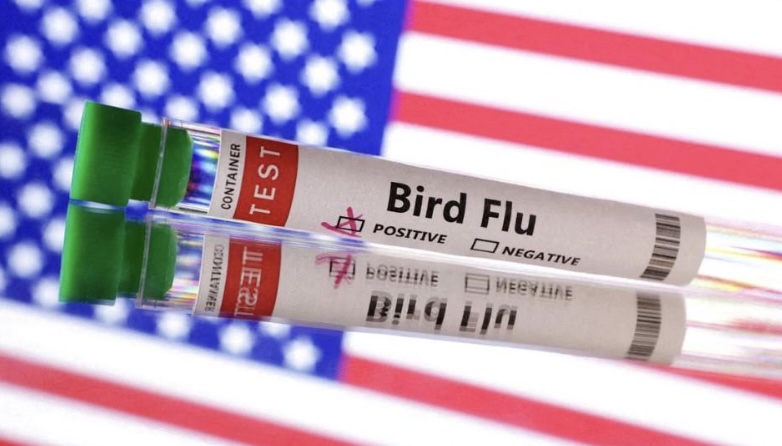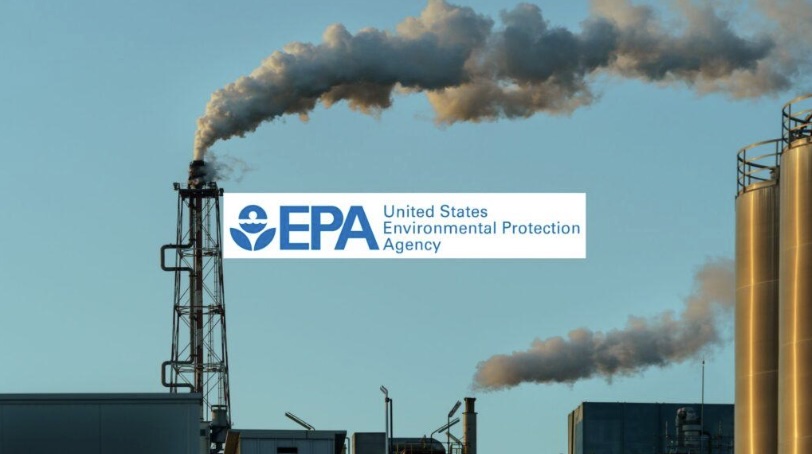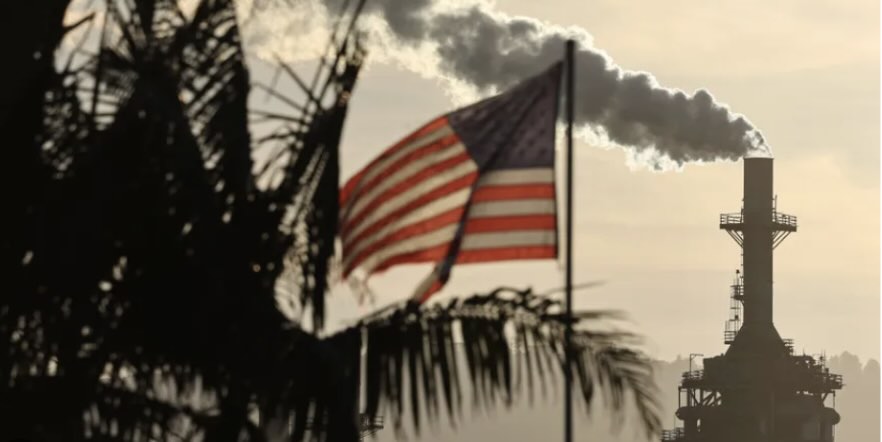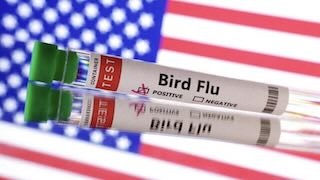May 25 (News On Japan) - “You have cancer and need to undergo surgery immediately.” Cathy Allen will never forget the look on the doctor’s face when he marked the distribution of a “tumor” on her chest CT scan.

Allen, a resident of St. George, Utah, lives in one of the fastest-growing metropolitan areas in the United States, with the nearby Mojave Desert encroaching. Initially, Allen suffered from severe coughing, which the doctors diagnosed as pneumonia. They prescribed antibiotics and a nebulizer, but her condition worsened. Her lungs felt “tight and heavy,” and it turned out that the problem wasn’t pneumonia—it was cancer. For months, she endured extreme depression until a doctor revised the diagnosis: “You don’t have cancer; you have ‘Valley Fever.’”
Valley Fever, caused by a “fungus” that lives in hot desert environments, is a respiratory illness that can be fatal but is rarely diagnosed. Allen’s doctor remarked, “You are the first ‘Valley Fever’ patient I’ve encountered, and the first anyone I know has heard of.” However, last year, the number of Valley Fever cases in the United States increased by 50%.
The “fungus” responsible for Valley Fever thrives in hot desert conditions, making it rare for humans to encounter. But as environmental issues in the U.S. worsen, diseases like Valley Fever—coined as “American diseases”—are becoming more common and pose a growing threat to global health.
Experts are concerned that the second term of President Trump could face the impact of these “American diseases,” but he seems unprepared for such challenges.
The Lip Service of Environmental Protection
Americans often speak about environmental protection, presenting themselves as highly environmentally conscious. However, according to a 2024 Pew Research Center survey, economic issues ranked as the number one concern for Americans, with environmental protection placed at a distant 14th and climate change at 18th. Similarly, a Gallup poll conducted in the same year found that environmental protection didn’t even make the list of top concerns.
The reality is that the U.S. faces severe environmental pollution problems:
According to the American Lung Association, 4 in 10 Americans (approximately 135 million people) live in communities with unhealthy air. More than 90 million Americans reside in counties where air quality does not meet the minimum standards for particulate pollution, facing elevated risks of cancer, stroke, and premature death.
A report from the Environmental Protection Agency (EPA) reveals that about half of the U.S. rivers (over 1.1 million kilometers) and more than a third of the lakes are polluted, rendering them unsuitable for swimming, fishing, or drinking. In California, nearly one million people have drinking water contaminated with pollutants like arsenic and nitrates.

Over the past two decades, the U.S. has suffered from prolonged droughts. In California, 88% of the population faces water shortages. As of July 2023, nearly 1.4 billion acres of farmland across the U.S. were experiencing water scarcity. Meanwhile, the aging water infrastructure loses 1.23 million tons of drinking water each year, and the over-extraction of groundwater has led to contamination.
The U.S. produces 42 million tons of plastic annually, with an average per capita usage of 130 kilograms—more than double that of the EU. The production of plastic generates 232 million tons of greenhouse gases annually, and by 2030, emissions from U.S. plastic factories are expected to surpass those from coal-fired power plants. In 2018, the U.S. discarded 82.2 million tons of plastic waste, which will take hundreds of years to decompose.
Polluted environments foster the growth of dangerous viruses, and as urbanization increases and humans continue to invade surrounding environments, the risk of pandemics rises.
Cornell University disease ecologist Rena Ploreit explains that pathogens are abundant in ecosystems around the world, but pandemics are rare because they require a catastrophic combination of factors—natural environments being destroyed, and humans and viruses frequently coexisting in the same space. Once cross-species “viral sharing” occurs, a disaster can ensue.
Words Without Action: Americans' Reluctance to Change Lifestyles
The worsening ecological environment can largely be attributed to the lack of responsibility among the average American. Studies show that while 60% of Americans express concern about environmental issues, only 15% believe they are personally responsible for environmental degradation.
Americans' lifestyles may be the primary cause of environmental damage. The U.S. is the largest consumer in the world. With a population of 330 million, Americans’ annual consumption is more than twice that of China’s 1.4 billion people, and the per capita consumption is 6.4 times that of China. Fueled by consumerism, average Americans waste an astonishing amount. The wealthiest 10% of people in the world emit nearly half of the global carbon emissions, with most of them being Americans. According to the United Nations’ emissions gap report, in order to meet global climate goals, this group must reduce their personal carbon emissions by at least 30 times.
Take food waste as an example: Americans discard 103 million tons of food every year, which is equivalent to the total food waste from the UK, Germany, France, Italy, and Sweden combined. Each American throws away an average of 0.5 kilograms of food per day, the emissions from producing which are equivalent to the annual emissions of 37 million cars. Ironically, nearly 40% of food in the U.S. is wasted, while 37 million Americans and 11 million children face food insecurity.
Overconsumption also leads to massive amounts of waste. Americans produce approximately 300 million tons of urban waste annually, with half of it dumped into landfills. There are also thousands of “Superfund” hazardous waste sites in the U.S., the most polluted areas in the country.

Few Americans take the time to seriously consider the harm their lifestyles inflict on the world. Wildfires are a significant problem in the U.S., with 84% of them being human-caused. A popular trend in the U.S. is the "gender reveal party," where expecting parents invite family and friends to a gathering to reveal the sex of their baby. This is often done through fireworks—pink for a girl, blue for a boy. The infamous "Eldorado Fire," which burned for more than two months, was ignited by a single firework.
Privilege Means No Consequences for Environmental Damage
In the U.S., public institutions are often among the worst offenders in environmental destruction, with the military being a significant contributor.
Take Valley Fever, for example. It first gained attention during World War II, when thousands of U.S. soldiers contracted the disease after being sent to the Southwest deserts for training. Like most similar cases, the U.S. military did not disclose the issue or warn the public about prevention.
U.S. military bases are significant sources of pollution. A report found that there are 1,200 Superfund military bases in the U.S., with nearly 900 of them abandoned. Former U.S. Congressman and veteran John Dingell from Michigan once remarked, “Nearly every military base in this country has been heavily polluted.”
U.S. military pollution has emitted 1.2 billion tons of greenhouse gases, equivalent to the emissions of 257 million cars annually. During the wars in Iraq, Afghanistan, Pakistan, and Syria, the U.S. military’s total carbon emissions exceeded 400 million tons. If the U.S. military were considered a country, it would rank as the 47th-largest greenhouse gas emitter globally.
The shocking pollution can be attributed to two factors: one is mismanagement, such as the leak of 84,000 gallons of aviation fuel into the sewer system at a Navy air station in Norfolk, Virginia, which can harm the respiratory and nervous systems and even cause cancer. The other is gross negligence, as U.S. Air Force contractors dumped the industrial solvent trichloroethylene near Tucson International Airport for 29 years, resulting in cancer and other illnesses for over 1,350 nearby residents. In North Carolina’s Marine Corps base, Lejeune, harmful chemicals were dumped into groundwater for years.
Profit over People’s Lives
Public agencies are not alone in damaging the environment; large corporations and wealthy individuals are also to blame.
Over the past 30 years, plastic production in U.S. petrochemical facilities has surged. In 1990, the U.S. produced 17,100 tons of plastic, but by 2018, the production had doubled to 35,700 tons. The government doesn’t regulate how industrial wastewater is disposed of; each state sets its own rules.
A report from the Environmental Integrity Project shows that nearly 70 petrochemical companies in the U.S. discharge millions of pounds of pollutants into waterways every year. It is estimated that these companies release 9.9 million pounds of nitrogen and 1.9 million pounds of phosphorus into U.S. waterways, which could create low-oxygen zones and lead to harmful algal blooms and fish kills.
Houston, known as the petrochemical capital of the U.S. and the largest exporter of petrochemical products, discharges nearly a third of its wastewater into the Houston Ship Channel. Environmental groups have found that the soil around the channel contains high concentrations of dioxins, which can cause reproductive and developmental issues, harm the immune system, and even lead to cancer.

As long as a company is large enough, environmental destruction seems like a minor issue. The U.S. government publicly claims to regulate environmental damage, but in practice, it adopts a laissez-faire attitude. There are concerns that under Trump’s leadership, large corporations might become even more reckless. During his election campaign, reports indicated that Trump “asked fossil fuel industry executives for $1 billion in campaign donations, promising to loosen environmental regulations, fast-track permits and leases, and retain or increase tax incentives for the oil and gas industry.”
Even under President Biden, U.S. environmental issues have worsened. The frequency of natural disasters causing billions of dollars in damage has shortened from an average of every four months in 1980 to about every three weeks. As risks grow, insurance companies can no longer support the costs and have begun withdrawing. For example, StateFarm and Allstate have pulled out of California, and many smaller companies have either gone bankrupt or left Florida and Louisiana.
Not all Americans are worried about Valley Fever. Diane, a resident of St. George, Utah, is particularly focused on a new tourism project that will further erode the desert but bring economic growth. While many of Diane's neighbors have contracted Valley Fever, “they are very proud of this growth.”















